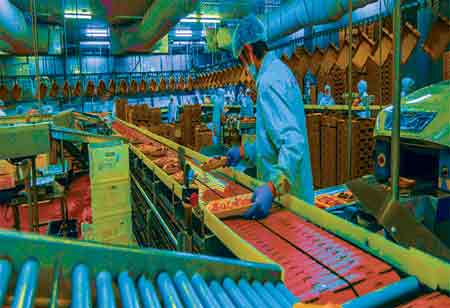

Thank you for Subscribing to Food Business Review Weekly Brief

The crab meat market has witnessed a growing trend towards sustainable practices to ensure crab populations' long-term viability while minimizing environmental impacts.
Sustainability has become a central concern in various industries, including the seafood market. Among the plethora of marine delicacies, crab meat holds a significant place, sought after for its unique flavor and versatility in culinary applications. The popularity of crab meat has put immense pressure on crab populations and their habitats. Many crab fisheries have implemented strict regulations on harvesting practices, such as setting catch limits and enforcing minimum size requirements for crabs caught. The measures help prevent the depletion of crab populations and ensure that enough crabs remain in the ocean to sustain healthy breeding populations. Adopting selective harvesting techniques has gained traction in the crab meat industry. By using traps and pots designed to target specific crab species and sizes, fishermen can reduce bycatch—the unintended capture of non-target species—and minimize the ecological damage caused by traditional fishing methods like bottom trawling. Selective harvesting conserves marine biodiversity and contributes to the overall health of aquatic ecosystems. The primary challenge facing the crab meat market is overfishing. Many seafood companies have implemented initiatives to optimize resource utilization and reduce their carbon footprint. Efforts to reduce waste and minimize environmental pollution have become paramount in the crab meat market. Some companies have invested in fuel-efficient vessels to decrease emissions during harvesting operations. Others have adopted innovative processing techniques to minimize waste generation and maximize the utilization of crab meat byproducts. Consumer awareness and demand for sustainably sourced crab meat have driven positive change within the industry. An increasing number of consumers are seeking out eco-friendly seafood options and are ready to pay a premium for products that are certified as sustainable. Seafood retailers and restaurants have been incentivized to source crab meat from fisheries that adhere to strict sustainability standards. Collaboration among stakeholders, including fishermen, seafood processors, retailers, and conservation organizations, has been instrumental in promoting sustainable practices in the crab meat market. These stakeholders work together to address common challenges and achieve shared sustainability goals through partnerships and initiatives promoting responsible fishing practices and habitat conservation. From developing eco-friendly fishing gear to implementing traceability systems that track crab meat's journey from ocean to plate, numerous opportunities exist to further enhance sustainability throughout the supply chain. Continued innovation and investment in sustainable technologies and practices will be essential to ensuring the long-term viability of the crab meat market. Sustainable practices in the crab meat market are necessary for preserving marine ecosystems, supporting livelihoods, and meeting the growing demand for seafood in a way that does not compromise the well-being of future generations. By embracing sustainable harvesting techniques, reducing waste, responding to consumer preferences, and fostering collaboration among stakeholders, the crab meat industry can continue to thrive while safeguarding the health of our oceans for years to come.